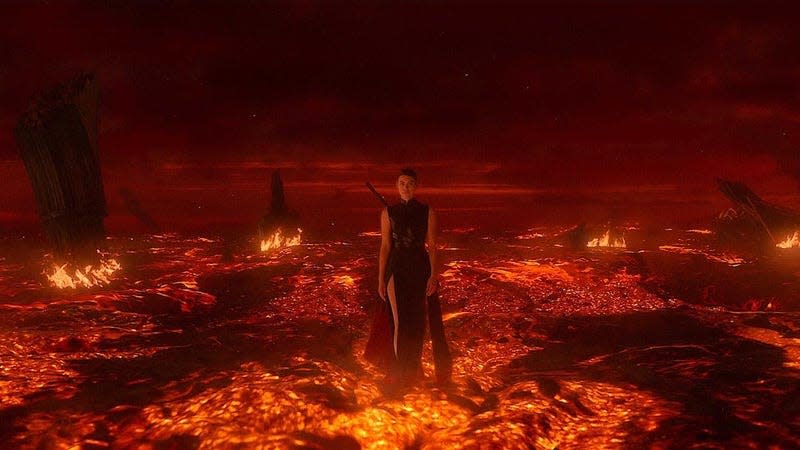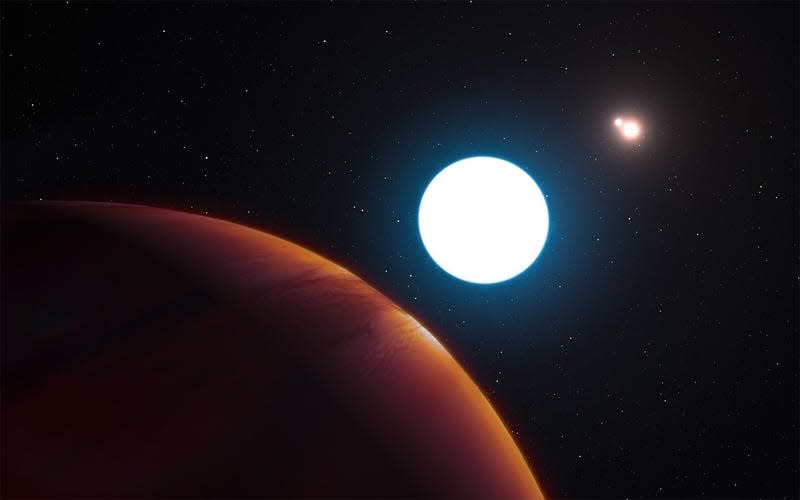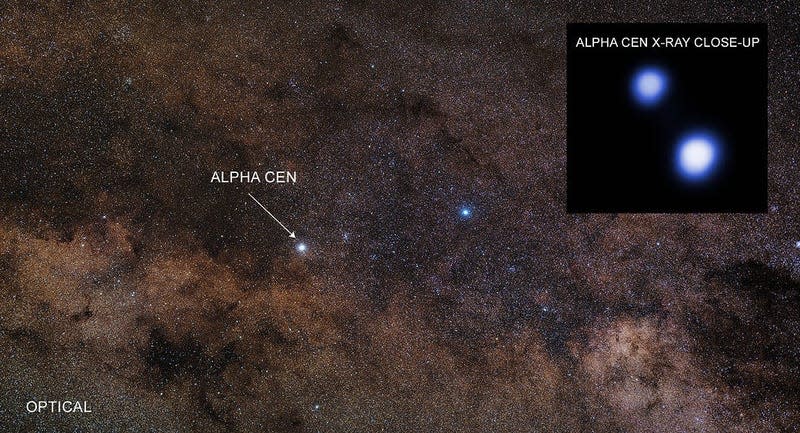Life Under Three Suns: The Real Physics Behind Netflix’s 3 Body Problem

By now, I’m assuming that we’ve made our way through all eight episodes of the Netflix adaptation of Liu Cixin’s The 3 Body Problem (and by we, I mean sci-fi nerds). The series is packed with science—much of it way over the top—but it grounds itself in quantum mechanics and astrophysics.
The show combines hard science fiction with some wild fantastical elements, exploring scientific theories and expanding on concepts in theoretical physics that have neither been proven nor disproven. Matt Kenzie, an associate professor of physics at the University of Cambridge, served as the science advisor behind the Netflix series. In his role, Kenzie tried his best to satisfy audience members who may be doublechecking the calculations behind the signal reflected from Jupiter, as well as ones who are neither aware of, nor interested in, the scientific explanations behind the plot.
“We’ve tried to discuss ways to make the science work and we want to check that we don’t portray something on the screen which seems impossible, or it’s not doable with the laws of physics,” Kenzie told Gizmodo. “So a lot of these things, I tried to come up with my own explanation for how this can happen or how that could happen.”
What is the 3 body problem?
The main idea behind the show is based on a notorious problem in physics which refers to any system with three bodies that are all exerting a significant gravitational force on one another, which causes the system to eventually break down. In planetary science, the orbits of three celestial objects can be chaotic, making it nearly impossible to accurately predict their future positions and movements.

It’s estimated that around 10 percent of all star systems have three stars, according to NASA. When two objects of similar mass, such as two stars, are orbiting one another, it’s easier to predict their rotation as they form a stable orbit around a common gravitational center. Having a third object in there, however, throws things off. The three stars start acting funny, interacting with one another in unpredictable ways.
For a planet stuck in the unfortunate star system, it can wander off in the gravitational field between the three stars rather than orbiting around one star, which would result in extreme conditions as it bounces between the different stars. In other cases, such as a tri-star system featuring a close binary pair and a third object farther out, planets will likewise face unstable conditions. These planets may experience less chaotic, but still significant gravitational forces, owing to the ever-changing distances between the stars.
What does a triple-star system look like?
In the series, an unlucky alien civilization inhabits a planet within a tri-solar system that resembles Alpha Centauri—the closest star system to Earth, located 4.37 light-years away and is also composed of three stars. Alpha Centauri A and B form a binary system, closely orbiting each other in a roughly 80-year cycle. Proxima Centauri, situated significantly farther from this central pair, hosts as many as five planets, including a rocky planet within its habitable zone. “The show is supposing that a life form developed there and it uses that star system as the proxy because it’s about the same number of lightyears away,” Kenzie said.

In 2021, astronomers confirmed the existence of a planet stuck in a three-star system that’s located 1,800 lightyears away from Earth. The planet, a gas giant similar to Neptune, orbits its host star once every five days at a close distance. Its host star, KOI-5A, orbits a nearby star, KOI-5B, once every 30 years while a more distant star, KOI-5C, orbits this pair once every 400 years.
Back in 2016, a research team presented evidence claiming the existence of a stable tri-star system, and with a planet in the mix. The paper was eventually retracted because the object initially identified as a planet turned out to be a fast-moving background star.
In its fictional orbit among the three stars, the San-Ti’s planet goes through periods of chaos and stability. The alien world is in a stable era when it orbits around one sun, but it enters into its chaotic era when another sun’s gravitational force snatches it away and the planet starts to wander in the gravitational field between the three stars. During the chaotic era, living conditions on the San-Ti planet become hard to endure, with extreme temperatures that vary between being too hot or too cold for life to be able to thrive.
Could life exist on the San-Ti planet?
If humans were to live there, we would have a really tough time adjusting to the chaotic and stable eras that take over the fictional planet on the show. It’s unlikely that Earth-like life could develop the resilience needed to survive a temperature spike of 200 degrees overnight. Additionally, the ability to “dehydrate” and shrivel up our entire bodies, only to “rehydrate” and revive by plunging into water once the planet cools down, seems highly implausible.
“Evolutionarily speaking, that would just wipe out a species that developed,” Kenzie said. “However, it seems that in the show, there is a species that has somehow developed resilience to this and has been able to evolve.”
In theory, the chaotic orbit would create an atmosphere that is unsuitable for complex organisms to thrive. But then again, we are viewing life on other planets through an Earthly lens, and perhaps not all life forms in the universe are carbon-based, or that living organisms may have developed in a physically and biologically different way than on our home planet. That said, tardigrades on Earth have evolved an array of tolerances, and like the inhabitants of San-Ti, can survive extended stints of dehydration.
Overall, scientists agree that for any form of life to exist on another planet, it would need water on its surface. For a planet to have water, it needs to orbit its host star in the habitable zone, also known as the Goldilocks zone, where it’s not too hot nor too cold for life to thrive. In three-star systems, the mere existence of a planet is already rare enough, and it’s even more challenging for that planet to orbit its star within the habitable zone.
The series, however, doesn’t bother itself with the details. Instead, it creates a clever way to bypass thinking about what an alien civilization in a triple star system would look like. The aliens on the show are viewed through a virtual reality headset, and they look like us in the game, but their real form is never actually revealed. “It allows you some creative freedom because you don’t actually have to portray the planet as it is,” Kenzie said.
For a particle physicist like Kenzie, it was a fun exercise to imagine life on another planet but, as he said, he’s not giving up his day job. “I tend not to worry myself too much and imagining what other alien species look like, but sort of content myself with the fact that it must be there,” Kenzie said.

